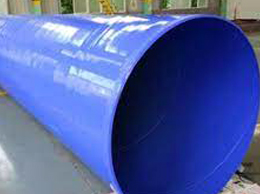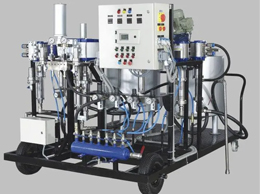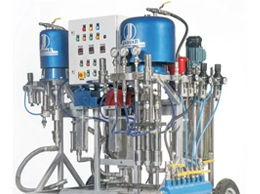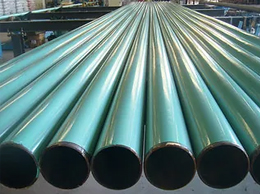Painting Process
Common types of coating material for steel potable water transmission pipe. The list includes coal tar enamel, cement mortar, liquid-applied epoxy, fusion bonded epoxy (FBE), and polyurethane (PU). Each of these lining technologies have inherent advantages and limitations. Additionally, each interior coating type has installation requirements for surface preparation and application.
What Does Epoxy Coating Mean
An epoxy coating is a coating compound consisting of two distinct elements: an epoxy resin and a polyamine hardener (also known as a catalyst). When mixed, the resin and hardener engage in a chemical reaction that creates cross-linking of the elements as it cures. When the epoxy coating is fully cured, the resulting product is a durable, rigid plastic coating with numerous desirable mechanical properties.
Epoxy coatings are renowned for their outstanding mechanical properties, such as hardness and durability, and abrasion, impact and chemical resistance. These attributes make epoxy coatings an ideal protective coating material for components in demanding industrial settings.

Epoxy floor coatings, for example, are commonly used to extend the life of concrete floors in industrial facilities, warehouses, logistic centers and other locations that are subjected to light vehicular traffic and medium to heavy foot traffic. Its resistance to attack from chemicals, such as those found in oils, cleaners and bleach, make epoxy coatings a popular protective medium in the automotive industry.
Fusion bonded epoxy coating technology is used extensively in the oil & gas and water/wastewater industry to protect pipeline assets from corrosion.
Coal Tar Enamel paint of pipe
The coal tar pitch, which forms the basis for the coal tar enamel (CTE), consists of stable molecules that are formed during coking operations at about 1,300°C. The fillers and coal add flexibility and strength to the product. The strong molecular arrangement provides CTE with the characteristics necessary to produce pipeline corrosion protection. These can be summarized as follows:
- Water resistant — negligible water absorption and vapor transmission.
- Stable chemical structure — resistant to acid and alkali
- Resistant to cathodic disbonding — most pipelines are protected using impressed current or sacrificial metal anodes; CTE is resistant to the alkaline environment formed at exposed metal surfaces.
- High electrical resistance — even after two years’ immersion in water, the electrical resistivity remains 1014-ohm cm3.
- Adhesion — forms a strong permanent bond to the steel surface.
- Resistant to attack by bacteria, marine organisms and root penetration.
Fusion Bonded Epoxies
Fusion bonded epoxies are a one part, heat curable, thermosetting epoxy. FBEs are applied to heated parts in a powder form (10-40 mils) that rapidly gels from liquid to a solid, have excellent adhesion to the steel surface, and are very resilient coatings that resist damage during handling. FBEs are considered environmentally friendly since they contain no volatile organic compounds (VOCs).
FBE should be applied immediately following the heating process to avoid excess pipe cool down (if the pipe cools below 450° F the FBE may not fully cure). The powder is generally applied using semi-automated application rings, electrostatic guns or flocking units to a minimum thickness of 14 to 16 mils. The FBE material is generally applied in several passes of 2 to 5 mils and should always be completed in an expedient manner to avoid lamination. The FBE will usually be dry to the touch in less than a minute and be fully cured within three minutes or less depending on the formulation of the material. Handling and testing commences once the applied coating cools to approximately 200°F.
Polyurethane
The aromatic polyurethanes are 100% solids materials that contain no VOCs. Polyurethane linings are typically applied at 20 mils minimum thickness; however, thicker lining applications are possible. Specific to the internal surface of potable water pipes, polyurethane materials have following advantages:
- Fast curing – ensures economy of high production rates and efficiency.
- Excellent adhesion to ferrous and properly prepared steel surfaces.
- High impact resistance
- Effectively protects pipe from corrosion
- Lower lining thickness is required compared to other technologies, and hence pipe design can be more efficient, reliable and economical as the wastage factor will be reduced, and pipeline capacity is higher for the same size of pipe.
- Reduced head loss and pumping losses due to a smoother internal surface of the pipes.
- Longer economic life as deterioration due to erosion cavitation is low.









